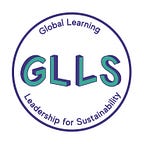Gökçen’s Reflection on Vegan Cheese Workshop
If I ask which one is harder to give up: meat or cheese? As a pescatarian, the answer for me was cheese, of course. It’s okay not to eat meat, but I even could not imagine a world without cheese or yogurt. The only reason was not the taste of dairy products but I try to also cover my protein deficit with the aid of dairy products. Therefore, all kinds of dairy products were “My preciousss!” literally. Nevertheless, one side of my mind tried to find an alternative for dairy-based cheese. After a quick research, I came across the idea of “Vegan cheese”. At first, I did not believe that I could make edible and tasty cheese in my home with vegan products. But then I said to myself “Challenge accepted!”. That was my motivation to go to the vegan cheese workshop in Culinary Arts School.
In the workshop, we had 4 different vegan cheese recipes, 1 vegan milk recipe, and 1 vegan cheese salad recipe. I must confess that all the recipes were much easier and more applicable than I thought before. We started with the almond milk recipe. It was the easiest thing in the world. If a cow saw this almond milk recipe, it would immediately stop producing milk in its breasts and feed its baby calf with this milk. The only thing you do is mix almonds with some water, stir in the mixer, and then filter it. The filtrate is almond milk, and the residue will be almond cheese in just one hour. At that point, I want to underline the philosophy of the practice of making vegan cheese, because as you realize, we did not throw away the residue of almond milk, but we use it for making cheese. Basically, this practice itself is a sustainable way to produce cheese and this also should be appreciated.
I am sure that at some point you were in doubt about the taste of vegan cheese, maybe just because of your suspicions, you may resist trying it. But my friend, you do not even know what you are missing out on. To be honest, I did not believe that vegan cheese can be as tasty as dairy-based cheese but this workshop showed me the opposite. To prove it, I will share my favorite recipe in the workshop.
Oven Roasted Almond Cheese
Ingredients:
175 g almond milk residue (you can use the residue left behind from almond milk, it’s shown in the picture)
5 ml lemon juice
1 sprig rosemary
1 sprig thyme
5 g salt
5 g poppy seed
1-Mix all ingredients except poppy seeds, and blend the mixture.
2-Place greaseproof paper on the baking tray.
3-Hold the mixture in your hand and shape it like a ball.
4-Put the mixture ball on the greaseproof paper, then apply gentle pressure on it until thickness become 1.5–2 cm. (thickness should be approximately as much as the thickness of your thumb)
5-Cover both the upper and bottom surfaces of cheese with poppy seeds.
6-Put the tray in the preheated oven at 180 C degrees. Wait until corners become roasted. Cheese is ready! Bon appetit!
Hint: You can store it in a deep freezer for longer times. Do not worry, both the taste and texture of cheese will be the same after they thaw. I tried!
There is one more thing that I want to share. This workshop really made me question what cheese is or what features make cheese a cheese. Even though I consume it a lot, I did not think this much about cheese. During the workshop I found myself asking questions like: Does cheese should be whitish and/or yellowish? Does it have to melt or stretch? Does it have to be smelly? What is cheese, damn it!? The cheese I made from almonds looks like cheese, tastes like cheese, does not smell like cheese but it is better for me, so that is a cheese for me. What I try to say is that if we use our imagination and skills, I believe that we can make cheese from anything. The only important thing is the desire to look with different perspectives and be open to new ideas. If you can accept a new way of thinking, then you can give it a try. I gave it a try, and now I am very happy with the results. Highly recommended!
Elif Gökçen Bozkurt
